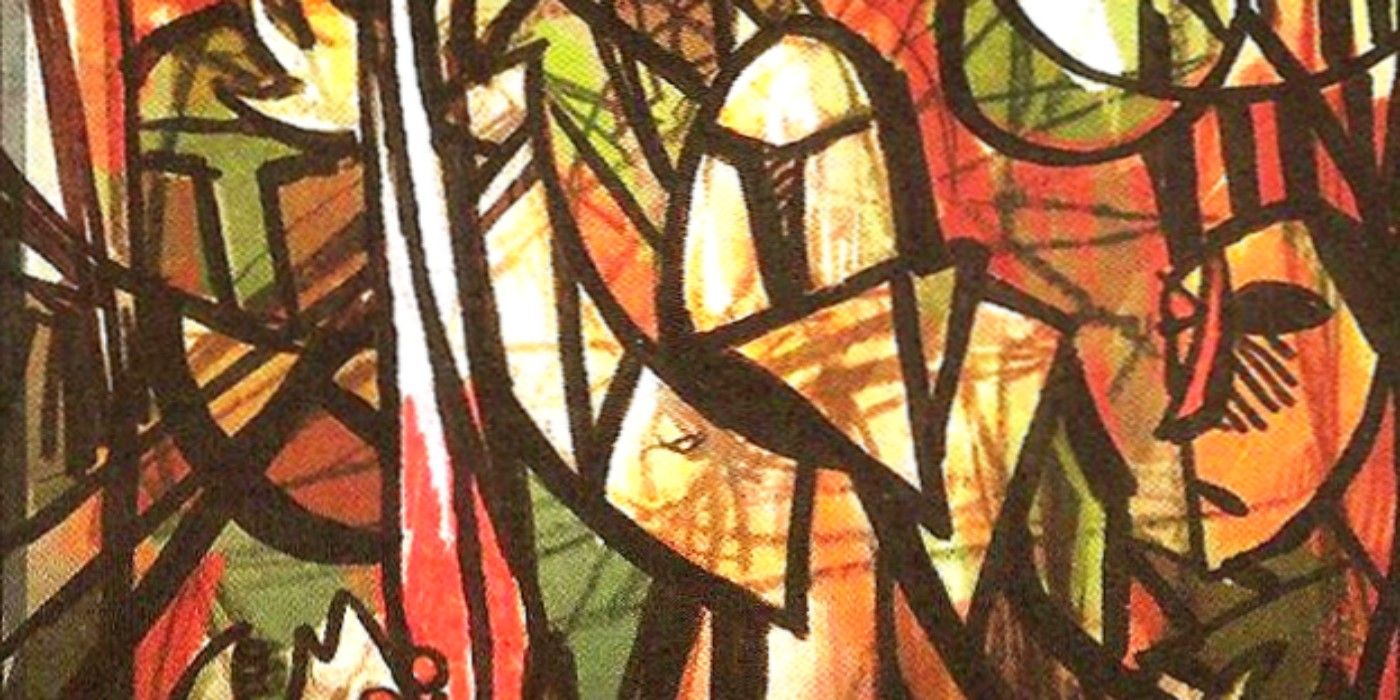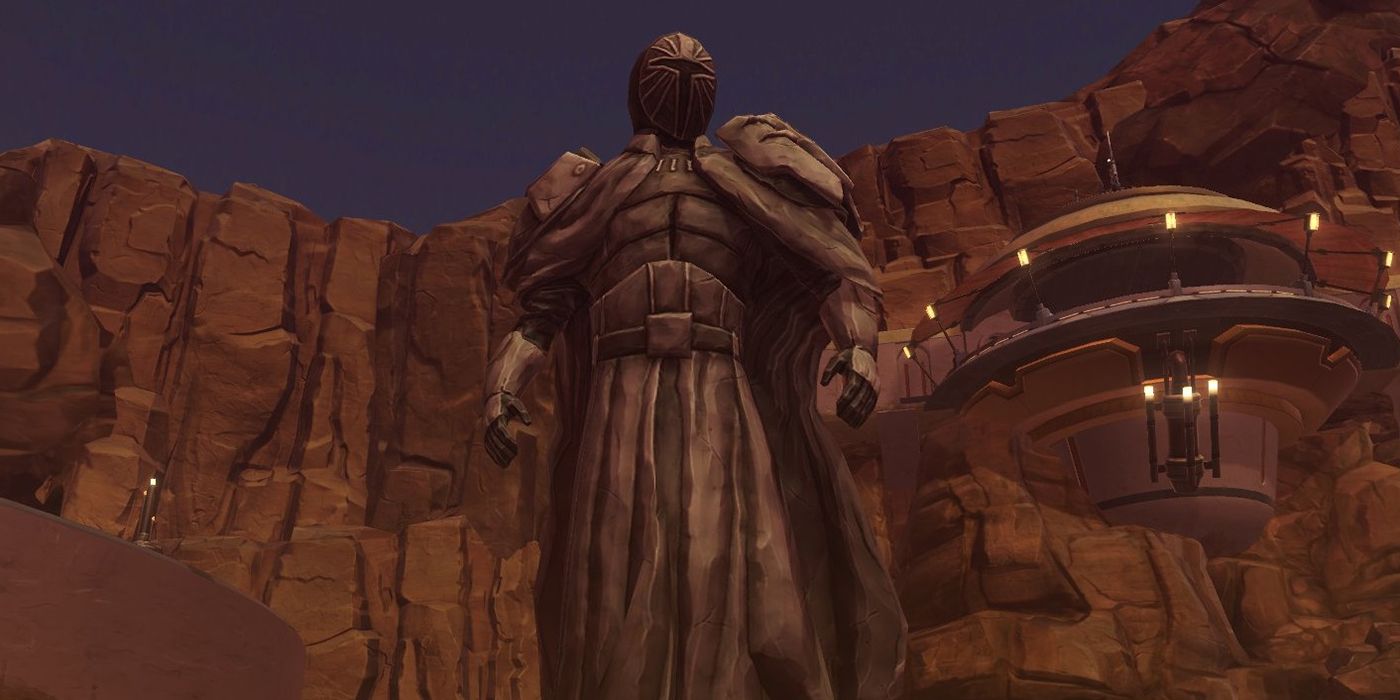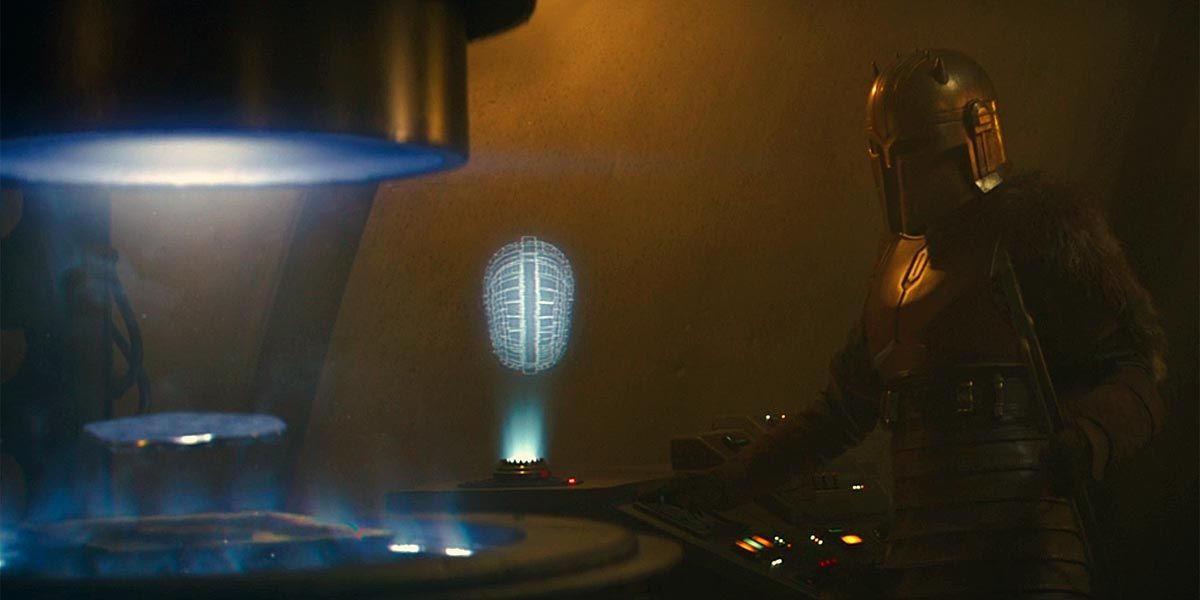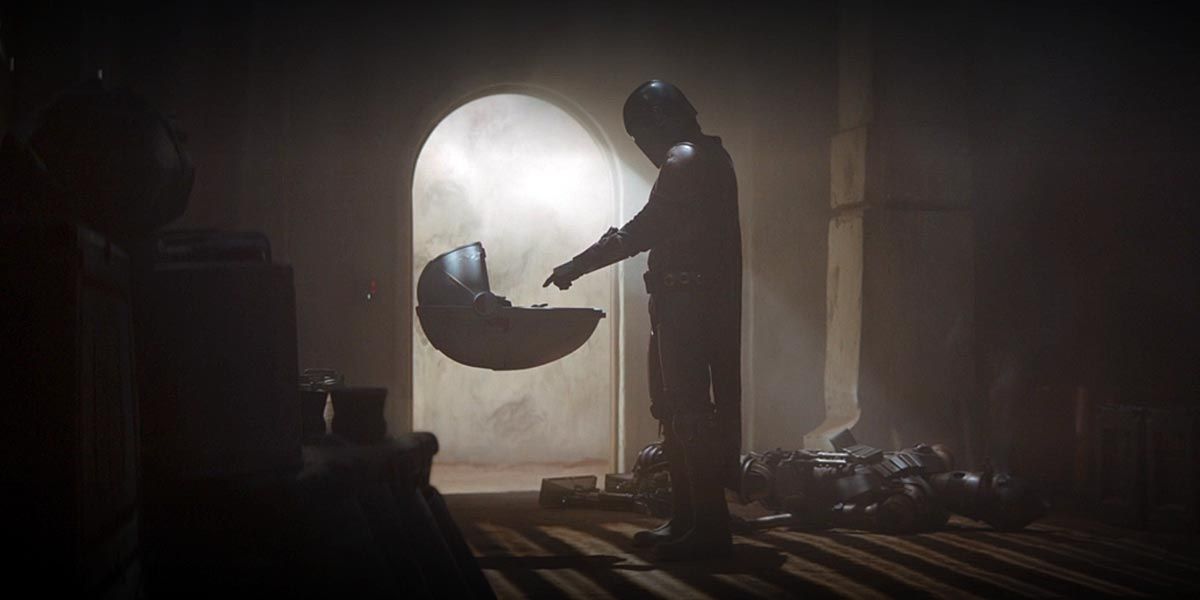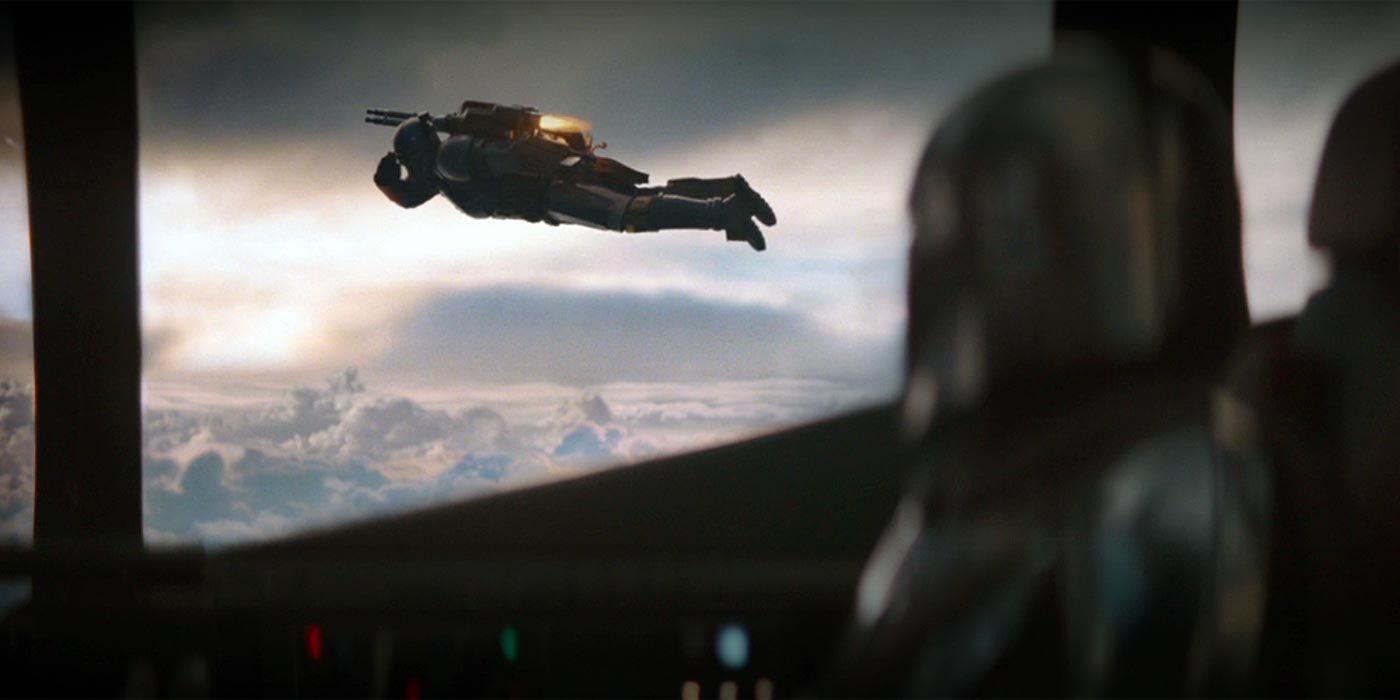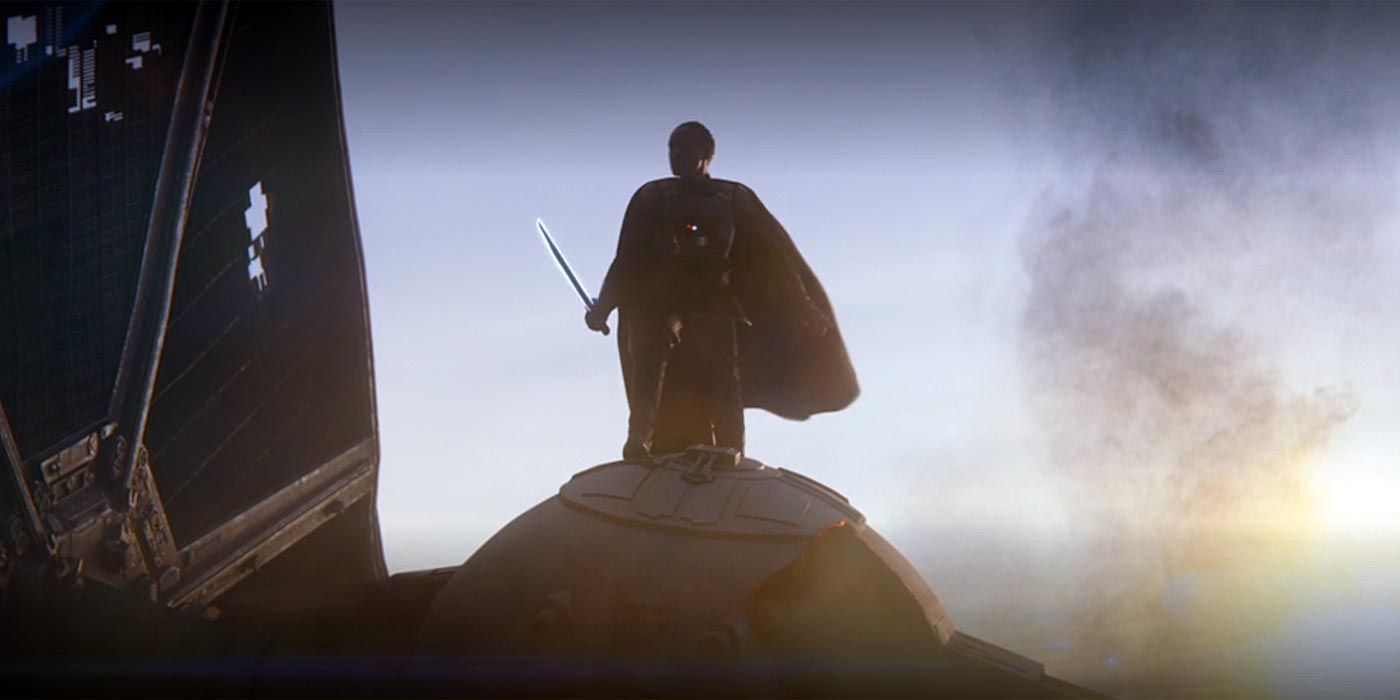WARNING: The following contains spoilers for the Season 1 finale of The Mandalorian, "Redemption," streaming now on Disney+.
The Season 1 finale of The Mandalorian revealed a massive detail about the Mandalorians, near-legendary warriors of the Star Wars galaxy: They're not a race, but instead a Creed, like the Jedi, which no doubt comes as a surprise to fans of Star Wars: The Clone Wars and Star Wars Rebels.
Over the course of its eight-episode first season, the Disney+ series has, if not retconned, then certainly recontextualized Mandalorian culture, with cryptic mentions of the Great Purge; the subsequent diaspora, and possible near-eradication, of the followers of the Way; a solemn refusal of a Mandalorian to remove his or her helmet in front of another; and the introduction of the smith-priest figure, the Armorer. Let's take a look at the biggest reveals.
History
Mandalorians were a warring people from the planet Mandalore who quickly expanded to take over their sector, and tried to penetrate the galaxy's inner rim ... until the Jedi pushed back. This unexpected enemy, who harnessed mystical powers, propelled Mandalorian technology to match, repel or surpass Jedi powers. Despite their enmity, they were not always at war; at some points, Force-sensitive Mandalorians were inducted into the Jedi Order. One such was Tarre Vizsla, the first Jedi from Mandalore, and the forger of the Darksaber, whose descendants, particularly Pre Vizsla, were not as equanimous in their relationship with the Order.
However, war devastated their planet and divided Mandalorians into two factions: the pacifist, led by Duchess Satine Kryze, the official ruler of Mandalor; and the Death Watch, led by Pre Vizsla, who lived in the moon of Concordia and sought a return to the old ways. Palpatine took advantage of those divisions to install a series of puppet rulers, first during the Clone Wars and then under Imperial rule, a devastating era for Mandalore that culminated in the Great Purge, during which many Mandalorians were killed, and their precious beskar steel was stolen by the Empire.
Although The Mandalorian leaves ambiguous the origin of the enclave, or tribe, living in secrecy in the Nevarro sewers, it's implied they descended from Death Watch Mandalorians, who rescued young Din Djarin during the Clone Wars, and then adopted and trained him until he too pledged himself to the Creed.
Organization
The tribe appeared to be organized with the Armorer as leader and spiritual guide, and the adult Mandalorians emerging one at a time to disguise their true numbers, and to provide for the covert and foundlings. The Armorer decided who received a signet, which marked the foundation of a clan, the basic family unit of Mandalorian culture. Clan emblems are determined by the feats of their founder; blood relation doesn't matter, as long as the members constitute a family unit. Din Djarin now has a clan of two: himself and the Child. Clans can belong to Houses, like Clan Wren was allied with House Kryze, but as of the end of Season 1, it;s unknown whether any houses remain.
Nevarro's Mandalorians shared a living space, resources and wisdom, and seemed to retain the costume of hashing out their differences in individual combat.
The Creed
The Mandalorian's tribe lives and dies by the Creed, which at the time we meet them included the prohibition against removing their helmet in front of any living person, the obligation to win fights honorably, the need to stay hidden, and the prioritization of children.
As seen in the third episode, there are some cracks in the façade -- some Mandalorians, like Paz Vezla, oppose remnants of the Imperial army and consider any contract, exchange or payment from them the highest dishonor to their tribe. The Armorer seems more neutral, placing the well-being of the tribe before anything else, and that of the foundlings above the tribe. Actions derived from following the Creed are punctuated by the declaration, "This is the Way."
The Art of War
The Mandalorian pays special attention to the warriors' arsenal, from the aforementioned helmet -- it's capable of detecting heat signatures, and picking up long-range audio -- to the coveted armor forged from beskar. Other cool Mandalorian weapons are their jet packs, which they call "the art of the Rising Phoenix," in which they train as children, but which requires constant practice as adults to master, their vambraces, which have whipcord launchers, dual flamethrowers, and the incredibly handy close-range, group-targeting whistling birds.
Regarding tactics, Mandalorians are flexible and smart but favor honor before reason -- although in the case of the Armorer, who took out an entire platoon of Stormtroopers with only her forging tools, her abilities are so elevated that anyone attaching her would be the unreasonable one.
Their best quality is their "got your back" attitude toward their own, even if they dislike the Mando in question and doing so places them in great danger. Din's covert covered his escape from Nevarro with the Child, although he never asked them for their assistance.
RELATED: The Mandalorian Introduces Star Wars' Most Bizarre R2 Unit
The Darksaber
Ah, the Darksaber. In the closing moments of the season finale, Moff Gideon (Giancarlo Esposito) is seen wielding the legendary lightsaber, a relic of House Vizla forged by the first Mandalorian to join the Jedi Order.
Din relates that Gideon was an Imperial Security Bureau officer during the Great Pure, which probably allowed him to access the relics of Mandalore, and he could have taken the Darksaber after the Empire fell. Interestingly, the Mandalorian who confronted and later defended Din in Chapter 3 is Paz Vizla, although whether he's a descendant of the legendary Jedi isn't known.
In any case, Gideon's ability to use the Darksaber, as well as his more than casual interest in the Force-genius Baby Yoda, hints at a Sith or Jedi connection. There may be a chance he is Force-sensitive, or at least Force-interested, or that he's working with a faction that is.
In any case, the Darksaber represents the best of the Jedi and the Mandalorian, as well the name of a house that, like the Skywalkers, swung wildly from one affiliation to another across its history. The fact that an intelligent ex-Imperial is wielding the weapon so casually seems foreboding for Season 2.
Created by Jon Favreau, The Mandalorian stars Pedro Pascal, Gina Carano, Carl Weathers, Giancarlo Esposito, Emily Swallow, Omid Abtahi, Werner Herzog and Nick Nolte. Season 2 arrives in fall 2020 on Disney+.

